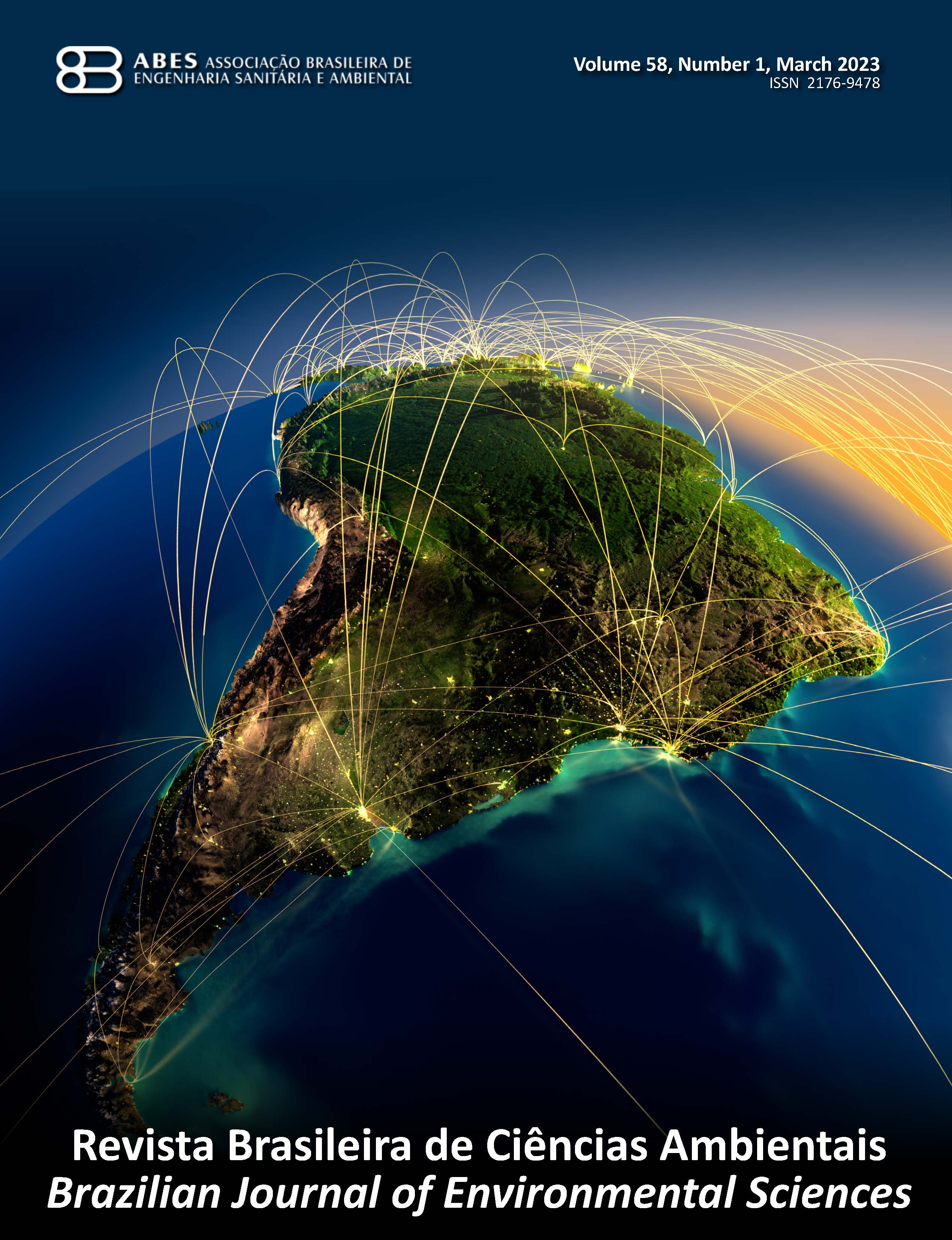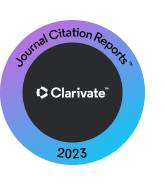Numerical method for carbon footprint assessment of recycled concrete aggregates
DOI:
https://doi.org/10.5327/Z2176-94782498Keywords:
numerical modeling; civil construction waste; life cycle assessment; CO2 emission.Abstract
The construction sector is a major generator of atmospheric emissions and solid waste, denoting the need to account for its environmental impacts in contributing to climate change. One way to analyze these effects of the sector on the environment is through life cycle assessment (LCA), which considers the impacts of the entire product system. This research proposed a numerical method for the LCA of recycled concrete aggregate (RCA), related to carbon footprint, based on the procedures of NBR ISO 14040, using databases and other studies as references for modeling. This meets the need to simplify the LCA of the RCA determination process, given the complexity of material characteristics data, offering a practical alternative for academic and industrial applications. In the model, three main processes were adopted: concrete structure demolition, material transportation, and aggregate recycling; they were classified and quantified based on emissions from the use of electrical energy and the burning of fossil fuel. Thus, the LCA equation was modeled according to the final size of the aggregate and transport distances, making it possible to obtain a carbon footprint value. In the end, it was possible to conclude that the complete model was able to simplify the implementation of LCA in RCA, obtaining statistical consistency and reliability through validation with reference studies.
Downloads
References
Agostini Industrial, 2022. Produtos: linha construção civil (Accessed October 28, 2022) at:. https://www.agostiniindustrial.com.br/produtos/linhas/linha-construcao-civil
Aman, A.M.N.; Selvarajoo, A.; Chong, S.; Teo, F.Y., 2022. Comparative life cycle assessment of pervious concrete production in Malaysia with natural and recycled aggregate. Innovative Infrastructure Solutions, v. 7, 211. https://doi.org/10.1007/s41062-022-00801-3.
Associação Brasileira de Empresas de Limpeza Pública e Resíduos Especiais (ABRELPE), 2021. Panorama de Resíduos Sólidos no Brasil 2021. ABRELPE, São Paulo.
Associação Brasileira de Normas Técnicas (ABNT), 2014. NBR ISO 14040: Gestão ambiental – Avaliação do ciclo de vida – Princípios e estrutura. ABNT, Rio de Janeiro.
Atta, I.; Bakhoum, E.S., 2024. Environmental feasibility of recycling construction and demolition waste. International Journal of Environmental Science and Technology, v. 21, 2675-2694. https://doi.org/10.1007/s13762-023-05036-y.
Caixa Econômica Federal (Caixa), 2022. Sistema Nacional de Preços e Índices para a Construção Civil - SINAPI: Setembro/2022. Caixa, Brasília.
Choi, W.; Tae, S., 2024. Life cycle sustainability assessment method for concrete. Environment, Development and Sustainability. https://doi.org/10.1007/s10668-024-04854-5.
Componentes, Sistemas e Máquinas (CSM), 2022. Produtos: Equipamentos e acessórios (Accessed October 28, 2022) at:. https://www.csm.ind.br/maquinas/produtos/
Departamento Nacional de Infraestrutura de Transportes (DNIT), 2022. Sistema de Custos Referenciais de Obras - SICRO: Julho/2022. DNIT, Brasília.
Dias, A.; Nezami, S.; Silvestre, J.; Kurda, R.; Silva, R.; Martins, I.; de Brito, J., 2022. Environmental and Economic Comparison of Natural and Recycled Aggregates Using LCA. Recycling, v. 7 (4), 43. https://doi.org/10.3390/recycling7040043.
Imtiaz, L.; Kashif-ur-Rehman, S.; Alaloul, W.S.; Nazir, K.; Javed, M.F.; Aslam, F.; Musarat, M.A., 2021. Life cycle impact assessment of recycled aggregate concrete, geopolymer concrete, and recycled aggregate-based geopolymer concrete. Sustainability, v. 13, 13515. https://doi.org/10.3390/su132413515.
Komplet, 2022. Crusher (Accessed October 28, 2022) at:. https://www.komplet-rubble-recycling.com/categoria-prodotto/crushers/
Liu, J.C.E.; Chao, C.W., 2022. Equal rights for gasoline and electricity? The dismantling of fossil fuel vehicle phase-out policy in Taiwan. Energy Research & Social Science, v. 89, 102571. https://doi.org/10.1016/j.erss.2022.102571.
Machedon-Pisu, M.; Borza, P.N., 2023. Is the transition to electric passenger cars sustainable? A life cycle perspective. Sustainability, v. 15 (3), 2614. https://doi.org/10.3390/su15032614.
Mazurana, L.; Bittencourt, P.R.S.; Scremin, F.R.; Neves Junior, A.; Possan, E., 2022. Determination of CO2 capture in rendering mortars produced with recycled construction and demolition waste by thermogravimetry. Journal of Thermal Analysis and Calorimetry, v. 147, 1071-1080. https://doi.org/10.1007/s10973-020-10436-0.
Ministério do Meio Ambiente (MMA), 2014. Inventário Nacional de Emissões Atmosféricas por Veículos Automotores Rodoviários: 2013 – Ano-base 2012 – Relatório final. ANTT, Brasília.
Miyan, N.; Omur, T.; Amed, B.; Özkan, H.; Aydin, R.; Kabay, N., 2024. Recycled waste concrete and metakaolin based alkali-activated paste: characterization, optimization, and life cycle assessment. Construction and Building Materials, v. 416, 135233. https://doi.org/10.1016/j.conbuildmat.2024.135233.
Park, W. J.; Kim, T.; Roh, S.; Kim, R., 2019. Analysis of life cycle environmental impact of recycled aggregate. Applied Sciences, v. 9, 1021. https://doi.org/10.3390/app9051021
Paz, C.F.; Biela, R.; Punhagui, K.R.G.; Possan, E., 2023. Life cycle inventory of recycled aggregates derived from construction and demolition waste. Journal of Material Cycles and Waste Management, v. 25, 1082-1095. https://doi.org/10.1007/s10163-023-01594-y.
Porciúncula Júnior, S.A.; Andreoli, C.V., 2022. Proposal for a simplified sustainability report for small and medium-sized enterprises. Revista Brasileira de Ciências Ambientais (RBCIAMB), v. 58 (1), 67-80. https://doi.org/10.5327/Z2176-94781513.
Rack, M.; Valdivia, S.; Sonnemann, G., 2013. Life Cycle Impact Assessment—where we are, trends, and next steps: a late report from a UNEP/SETAC Life Cycle Initiative workshop and a few updates from recent developments. International Journal of Life Cycle Assessment, v. 18, 1413-1420. https://doi.org/10.1007/s11367-013-0569-1.
Rosado, L.P.; Vitale, P.; Penteado, C.S.G.; Arena, U., 2017. Life cycle assessment of natural and mixed recycled aggregate production in Brazil. Journal of Cleaner Production, v. 151, 634-642. http://dx.doi.org/10.1016/j.jclepro.2017.03.068.
Rosado, L.P.; Vitale, P.; Penteado, C.S.G.; Arena, U, 2019. Life cycle assessment of construction and demolition waste management in a large area of São Paulo State, Brazil. Waste Management, v. 85, 477-489. https://doi.org/10.1016/j.wasman.2019.01.011
Rubblecrusher, 2022. Product (Accessed October 28, 2022) at:. https://www.rubblecrusher.co.uk/
Sanquetta, C.R.; Maas, G.C.B.; Sanquetta, M.N.I.; Sanquetta, F.T.I.; Corte, A.P.D., 2017. Carbon dioxide emissions from electrical energy use in Parana State during 2010-2014. BIOFIX Scientific Journal, v. 1, 1-16. https://doi.org/10.5380/biofix.v2i1.50095.
Schafhauser, A.D., 2019. Análise de ciclo de vida de resíduos de construção e demolição usados como base de pavimentos urbanos. Master’s Degree Dissertation, Professional Master’s Program in Urban and Industrial Environment, Federal University of Paraná. https://hdl.handle.net/1884/69498.
Siqueira, R.A.; Silva, A.J.M.; Ribeiro, P.T.; Salomão, P.E.A., 2018. Comparative analysis between the usined concrete and the concrete produced in the construction site. Revista Multidisciplinar do Nordeste Mineiro, v. 2, 145-156. ISSN 2178-6925.
Soares, S.R.; Souza, D.M.; Pereira, S.W., 2006. Coletânea Habitare: Construção e meio ambiente – A avaliação do ciclo de vida no contexto da contrução civil. ANTAC, Porto Alegre.
Stadler, K.; Wood, R.; Bulavskaya, T.; Sodersten, C.J.; Simas, M.; Schmidt, S.; Usubiaga, A.; Acosta-Fernandez, J.; Kuenen, J.; Bruckner, M.; Giljum, S.; Lutter, S.; Merciai, S.; Schmidt, J.H.; Theurl, M.C.; Plutzar, C.; Kastner, T.; Eisenmenger, N.; Erb, K.H.; Koning, A.; Tukker, A., 2018. EXIOBASE 3: developing a time series of detailed environmentally extended multi-regional input-output tables. Journal of Industrial Ecology, v. 22 (3), 502-515. https://doi.org/10.1111/jiec.12715.
Sustainable Aggregates South Australia (SASA), 2016. Recycled aggregates bring carbon reduction benefits (Accessed September 03, 2023) at:. http://www.sustainableaggregates.com.au/docs/SASA_Env_Info_Sheet.pdf.
Sustainable Studies Center of Getúlio Vargas Foundation (FGVCES), 2016. Nota técnica: Valores de referência para o potencial de aquecimento global (GWP) dos gases do efeito estufa – versão 1.0. FGV, São Paulo.
Visintin, P.; Xie, T.; Bennett, B., 2020. A large-scale life-cycle assessment of recycled aggregate concrete: The influence of functional unit, emissions allocation and carbon dioxide uptake. Journal of Cleaner Production, v. 248, 119243. https://doi.org/10.1016/j.jclepro.2019.119243.
World Business Council for Sustainable Development (WBCSD), 2004. A corporate accounting and reporting standard. WBCSD, Geneva.
Zhang, Y.; Luo, W.; Wang, J.; Wang, Y.; Xu, Y.; Xiao, J., 2019. A review of life cycle assessment of recycled aggregate concrete. Construction and Building Materials, v. 209, 115-125. https://doi.org/10.1016/j.conbuildmat.2019.03.078.
Published
How to Cite
Issue
Section
License
Copyright (c) 2025 Revista Brasileira de Ciências Ambientais

This work is licensed under a Creative Commons Attribution 4.0 International License.

























